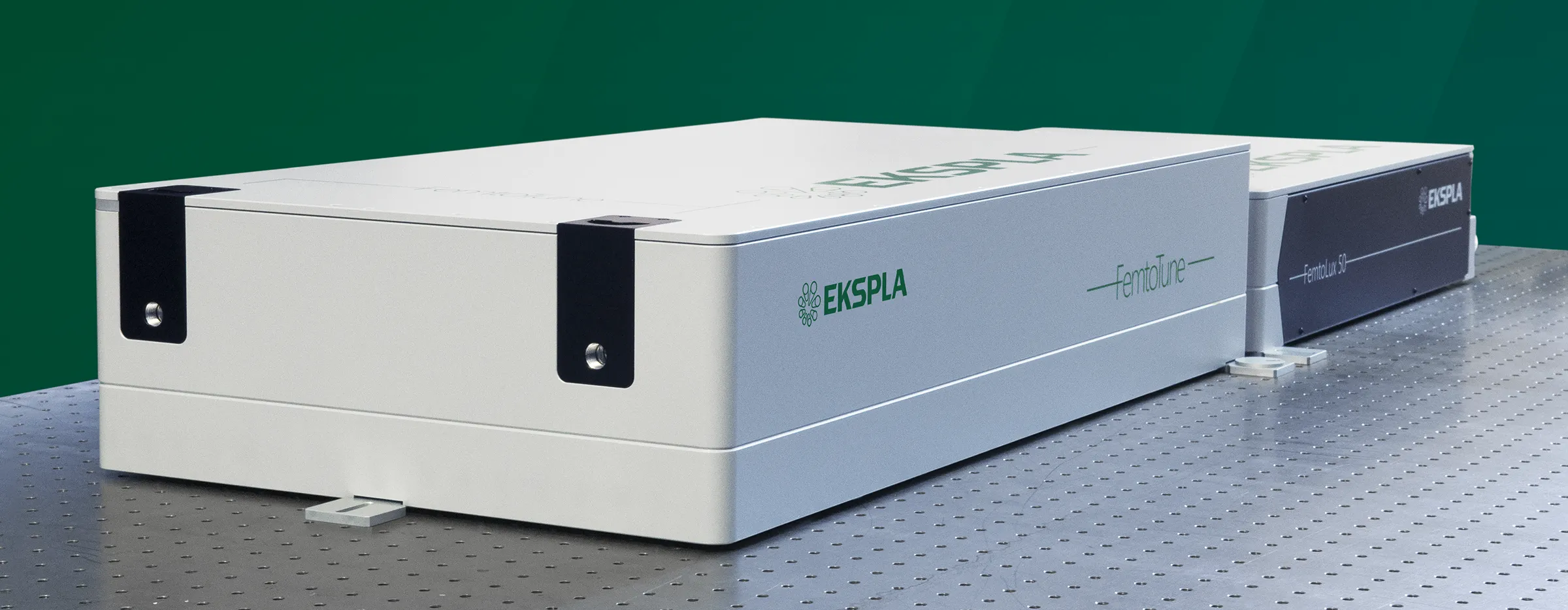EKSPLA is proud to announce the launch of the FemtoTune series — a new femtosecond tunable wavelength laser system engineered to meet the demands of modern ultrafast science. Building on over 30 years of experience in the development of picosecond and nanosecond tunable wavelength systems, as well as high-energy optical parametric chirped pulse amplifiers (OPCPAs), EKSPLA delivers a system that combines cutting-edge performance with exceptional flexibility, reliability, and ease of use.
The FemtoTune femtosecond tunable wavelength laser system provides a compact, high-repetition-rate (up to 100 kHz) solution with sub-50 fs pulse durations across a broad, tunable spectral range of 650–950 nm and 1000–2000 nm. Optional extensions allow coverage of additional spectral regions, including UV-VIS (330–470 nm and 550–650 nm) and gapless IR (2300–10,000 nm), making FemtoTune ideal for a wide array of ultrafast spectroscopy, microscopy, and nonlinear optical experiments.

Engineered for speed and precision, the system features time-synchronized motorized wavelength tuning. This enables rapid full-range scans in just a few seconds or quick access to specific wavelengths in less than 0.5 seconds. Continuous, gapless tuning is being supported in the mid-IR (2.5–10 μm) spectral range.
For applications requiring narrow spectral bandwidths — such as sum-frequency generation (SFG) or coherent anti-Stokes Raman scattering (CARS) — FemtoTune offers an optional narrowband output channel at 1030 nm or 515 nm, delivering bandwidths below 8 cm-1 without the complexity of external narrowing techniques. When synchronized with EKSPLA’s picosecond lasers and wavelength-tunable sources, even narrower bandwidths (<3 cm-1) can be achieved, enabling simultaneous high temporal and spectral resolution.
Powered by EKSPLA’s award-winning, industrial-grade femtosecond FemtoLux series pump laser, FemtoTune ensures long-term operational stability, hands-free functionality, and minimal maintenance — making it a reliable and efficient tool for today’s most demanding ultrafast research.